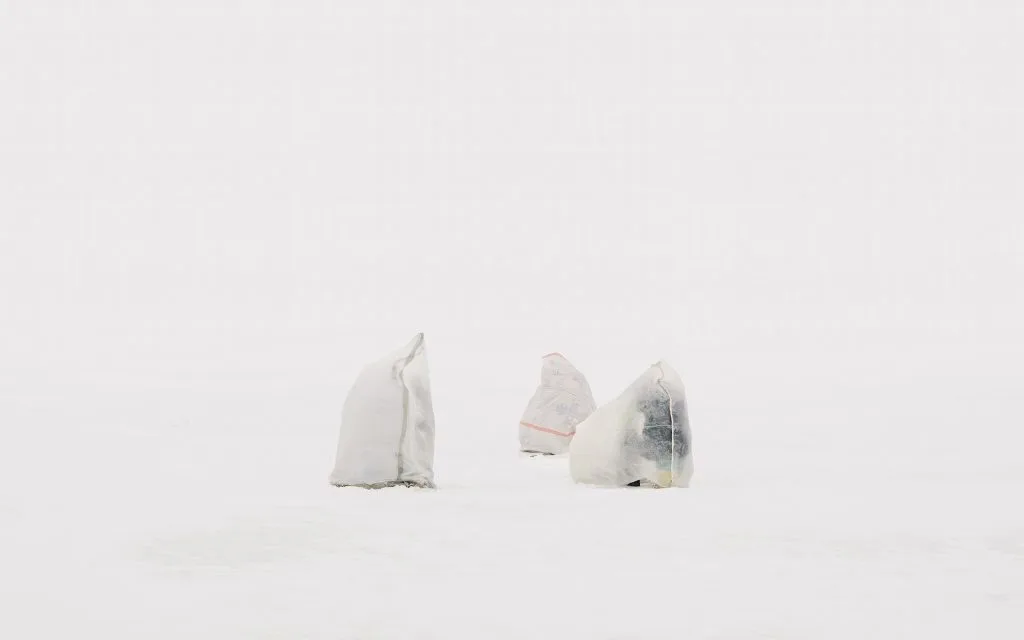
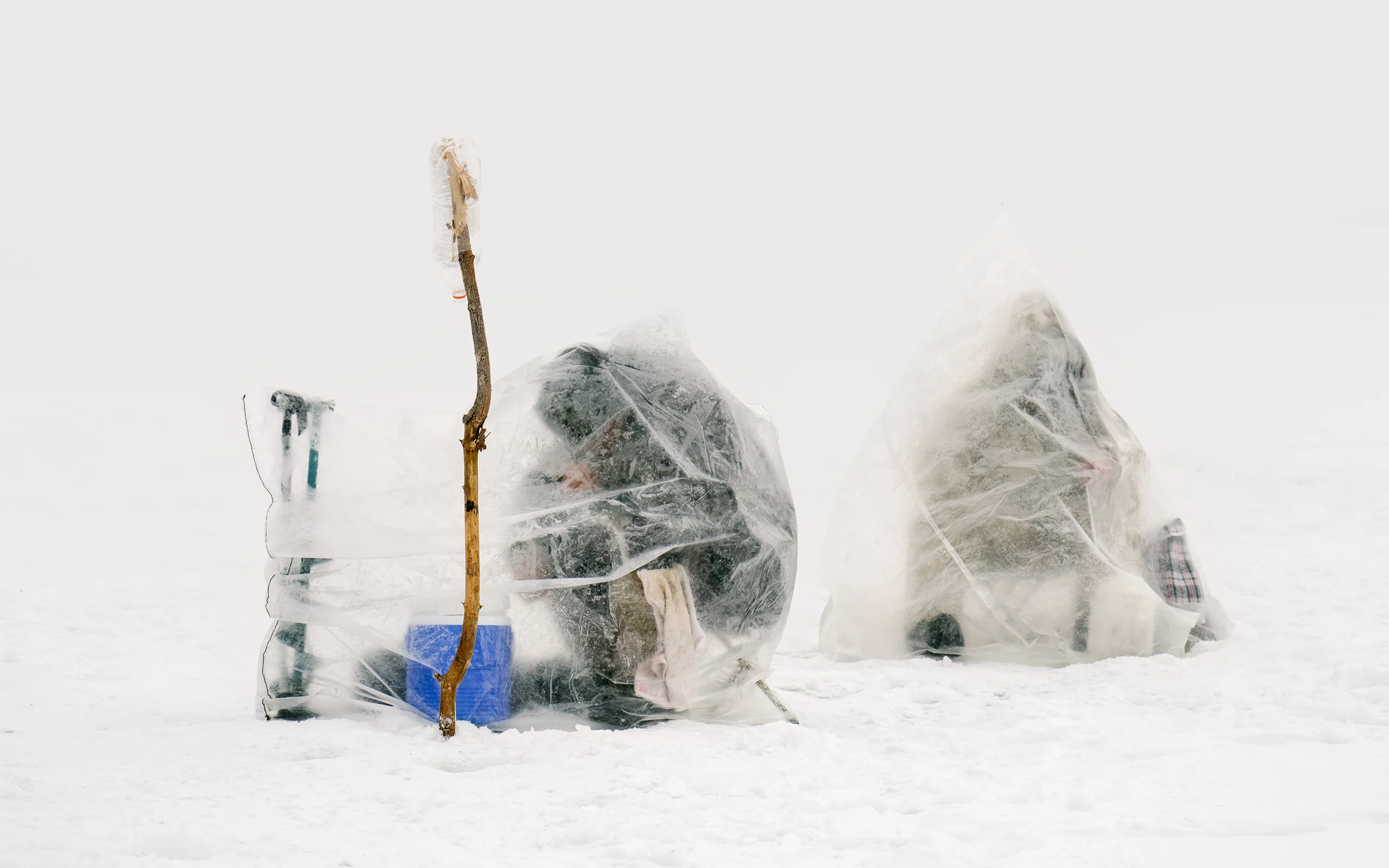
Creative projects don’t always present themselves in a neat, linear way. Photographer Aleksey Kondratyev was working on a series about national identity in central Asia which took him to Astana, the capital of Kazakhstan. There he came across locals fishing through the ice on the River Ishin which bisects the city.
“I would use that river to cross from one side of the city to the other when it was frozen,” Aleksey explains. Something about the strange set-up – the men wrap themselves in bags against the bitterly cold temperatures – caught his imagination and he started knocking on the makeshift tents and asking if he could photograph the men.
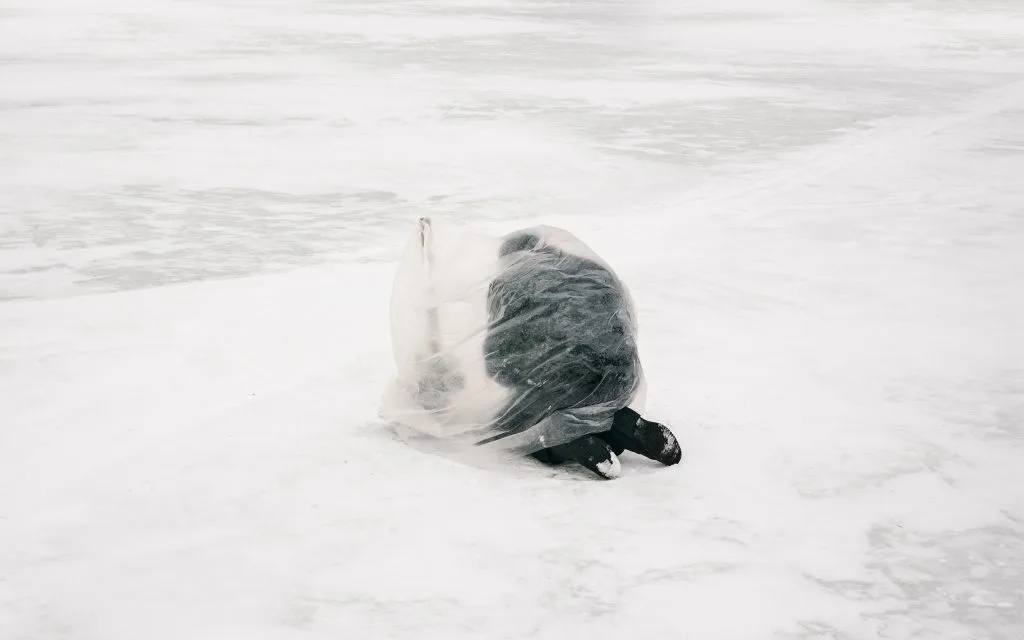
“I didn’t think I would do anything with the photos,” he says. “I just thought it was a weird oddity.” But back in Italy, where he had a residency on the famous Fabrica program, Aleksey found himself going back to the pictures of the fishermen. “I realised they were more interesting than the book I was working on!”
So he returned to the Kazakh capital and set about documenting this strange practice more closely. “I would try and talk to each guy, but they didn’t really understand what I was doing,” he says. “For them it’s so common, so banal, they were like why are you interested in this? Don’t you have this in the US?”
In fact, ice fishing does exist in the States, but there it’s more of a middle class pastime, Aleksey explains. And he is well placed to explore these cultural differences, he was born in Kyrgyzstan but moved with his family to Detroit when he was young.
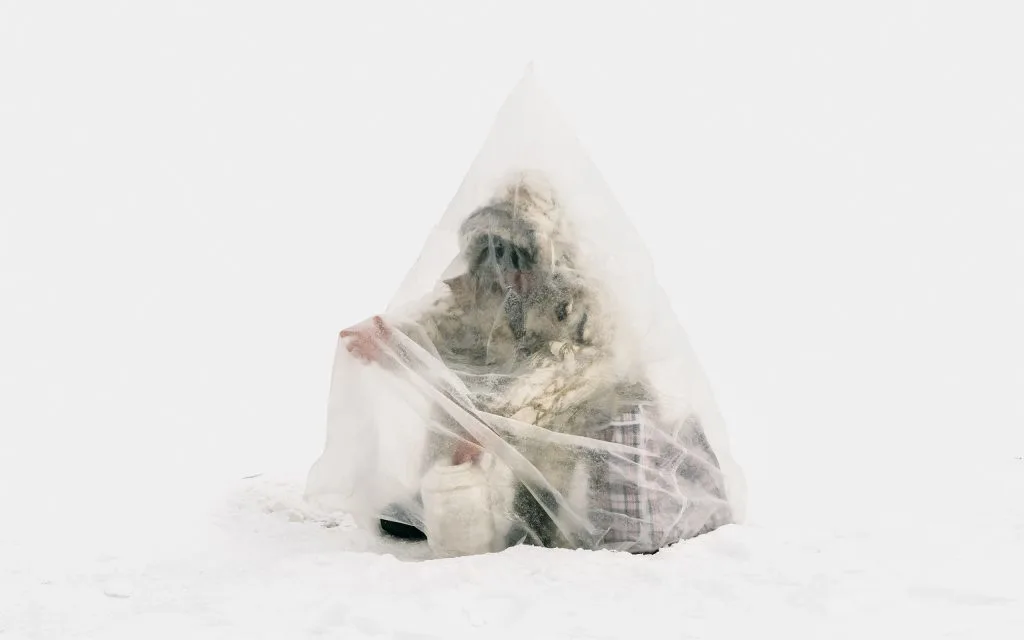
Astana is the second coldest capital city in the world (behind only Mongolia’s Ulaanbaatar, fact fans). It’s common for temperatures to plunge to minus 40 degrees Celsius, and when Aleksey first embarked on the project, his camera batteries kept freezing.
For his subjects, the plastic bags act as windbreakers and cocoons against the harsh conditions. “Their breath collects inside the bags and keeps them warm that way,” Aleksey says. “So you’ll notice in some of the shots there is yellow tape over the bags – that’s to patch the holes and stop the air escaping.”
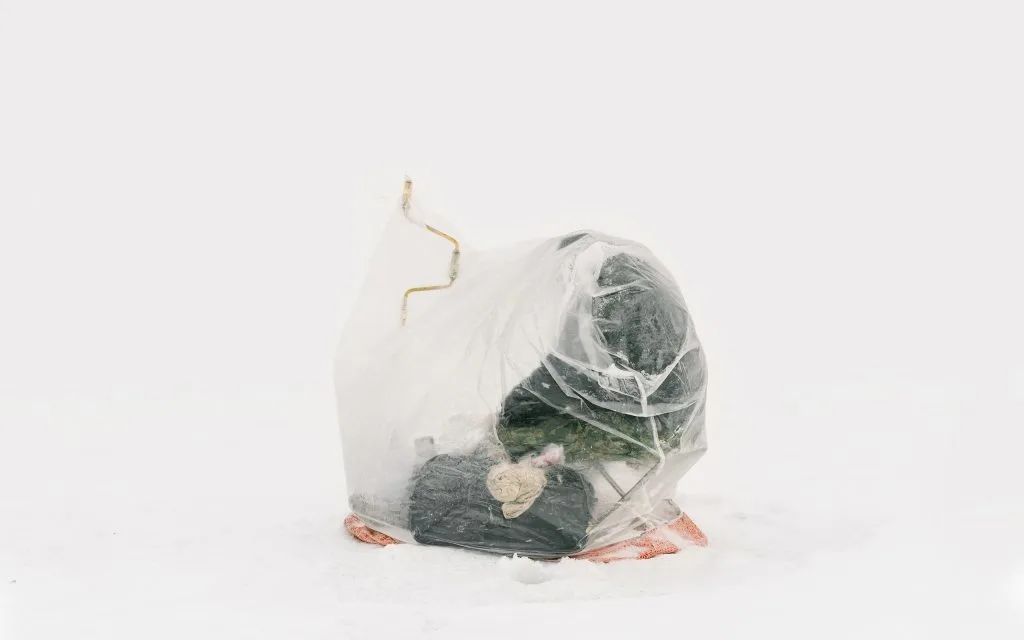
But he was also drawn to the type of bags the men used. Most are recycled from local markets where they had been used to store goods imported from Russia, China and the west. “I was interested in how the bags and their materials functioned as a signifier of the broader effects of globalism on individual people,” Aleksey says.
And artistically, the bags play an important role too, putting barriers between the viewers and the fishermen and changing the way we relate to the beautiful, ethereal, photographs.
For them it’s so common, so banal, they were like why are you interested in this? Don’t you have this in the US?
“It’s interesting because the plastic abstracts the subject inside,” Aleksey explains. “You can really get into the materiality and focus on the details. If the guys didn’t have the bags over them – if you could see their eyes and feel their gaze on you – then I feel it would be really uncomfortable to look at them in the same way.”
Now Aleksey is back in the US, about to start grad school at UCLA in California, where he has plans for a project that explores how people relate to their environments through work. But if his Astana adventure is anything to by, his next series may not come along when and where he expects it to.

